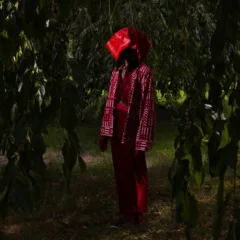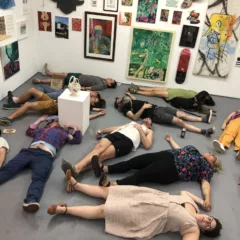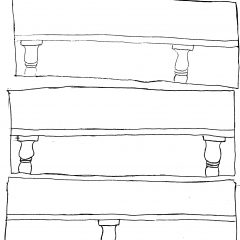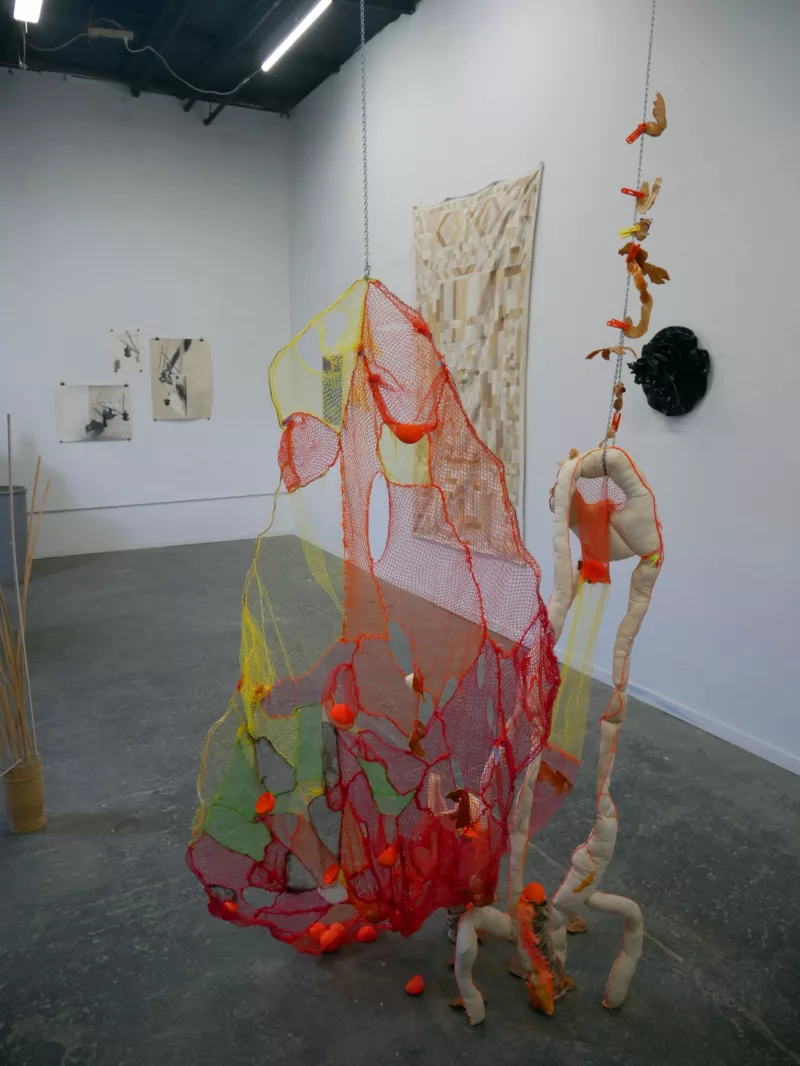
Big Ramp is a new gallery in Philadelphia, spawned from the ashes of the much-celebrated experimental multi-purpose art space Pilot Projects. Big Ramp’s inaugural exhibition DEATH CARD is a study of the tarot’s card for change, transition, and transformation. The self-referential theme is a bit gimmicky but still fun, something for the ones following the life/death cycles of artist-run spaces in the city to enjoy. The eight-artist group show spreads from Big Ramp to next-door neighbors Information Space. As a long-running project/studio space that hasn’t had any public showings in a while, DEATH CARD is a rebirth of sorts for Information Space as well.
Most of the artists have work in both galleries. Two works by Marilla Cubberly jump out at you right away with their strange postures suspended from the ceiling by small chains and strings. At times like appendages made of pillows, at times doll-like, the forms of dyed cotton hold this potential life that is probably wriggling them in small ways when no one’s looking. “Anxiety Graft” feels like a small nook or miniature environment with its netting gesturing at the shape of a seat littered in fruit-like objects and bits of simulated nature. It feels temporary, portable, transient, subject to change.
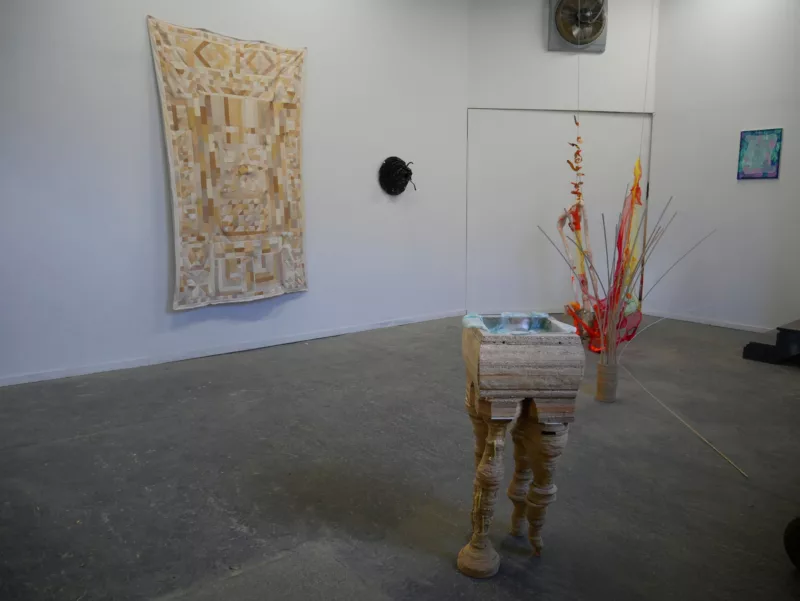
Also transient, though in a more precarious way are Matt Witmer‘s particle board sculptures. The IKEA-salvaged materials seem to hold an inevitable degradation. Shown inside of Information Space, “Holy Font,” a free-standing basin/table, specifically feels subject to collapse. Though even in height, the four legs of the basin shrink from thick to violently, unsupportably thin. The table itself holds a slab of glass that’s made to seem melted into the bowl. Right next to it, the simulated plant “Right of Way” has already snapped one of its long leaves. I wonder what it’d take to preserve these artifacts, to keep them long-term as a part of a collection.
Pastel drawings by Ian Bosak reflect a fun, playful extravagance found in transitory moments. Bosak is a writer and visual artist “known for his extravagant readings and colorful lifestyle” according to the provided bio. In “A Third Whisper”, a colorful pastel on paper of a person only partially shown, the focally yellow fingernails and matching earrings pop in this way that makes the subject of the picture seem to be in some melodramatic, gossipy moment. The hand is dismissive or used to hide whispers. “Duck”, another pastel, which is shown in Big Ramp, parades its titular subject in a gorgeous spray of color that makes up the water the duck swims on. Again, this melodramatic feeling, which must be triggered by the brightnesses paired against Bosak’s different blue hues. Unfortunately, both of his pictures, which are framed and under glass, are hung in spots that are deeply interfered with by the glare of windows. It’s tough to get a good look, no matter how much you enjoy them.
This issue of positioning is a bit of a recurrent thing in this show. Both Big Ramp and Information Space are laid out in ways that don’t exactly feel conducive to showing the art of eight different people. It feels cluttered. I really enjoy the work of the people I’ve mentioned, along with Marcelo Daldoce‘s deconstructed ink and charcoal shapes. But even if they weren’t all featured, I think this show in the case of both places would’ve benefitted from focusing on smaller groups. But then, I feel this way about most group shows. It’s still a fun one to visit.
DEATH CARD is a group exhibition featuring work from Ian Bosak, Jen Brown, Marilla Cubberley, Marcelo Daldoce, John Erwin Dillard, Liisa Nelson, Joni Sullivan, and Matt Witmer showing at BIG RAMP and Information Space running from January 27–March 9, 2024. Located at 2024 E. Westmoreland St. Open Fridays by appointment and Saturdays from 2-4pm. Big Ramp and Information Space are both wheelchair accessible.
For more Artblog coverage we suggest
Lane Speidel’s 2023 ‘We’re All Here But We’re All Dead’ An Interview with Jacob (Chris) Hammes on Pilot+Projects’s History and Closing
Morgan and Roberta’s 2019 podcast interview with Jacob (Chris) Hammes
Grand Ballroom of Doom comics on Artblog by Jacob Chris Hammes


